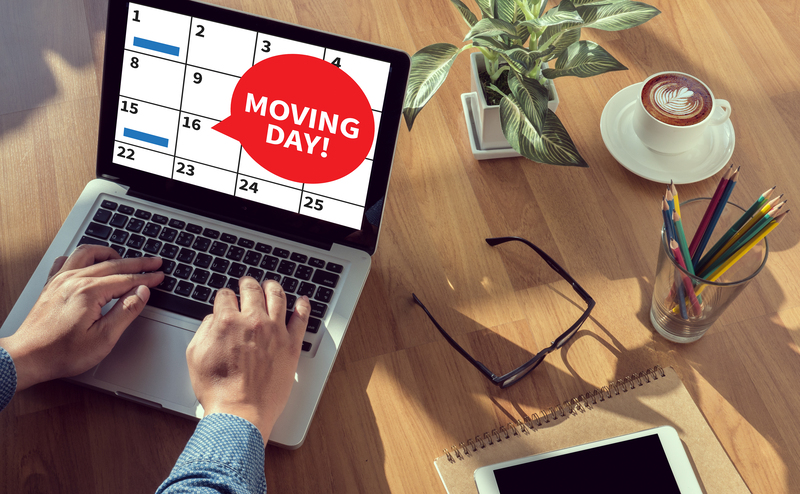How to Pick Up Heavy Objects Alone Without Hurting Yourself
Learning how to safely lift heavy objects alone is crucial for your well-being. Whether you're moving furniture, carrying building materials, or just lifting something hefty at home, using the right techniques is essential to avoid injury. This comprehensive guide provides detailed steps and safety tips to help you pick up heavy items solo, protect your back, and preserve your health for the long term.
Why Safe Heavy Lifting Matters
Trying to lift heavy items by yourself can lead to back injuries, muscle strains, and a host of other health problems if not done correctly. Most injuries occur because of poor posture, improper technique, or underestimating the risks involved. Knowing how to pick up large objects without hurting yourself isn't just for professionals--it's a fundamental life skill everyone should master.

Understanding the Risks of Lifting Heavy Objects Alone
- Back Injuries: The most common consequence of incorrect lifting is lower back pain or disc injuries.
- Strains and Sprains: Overexertion can lead to stretched or torn muscles and ligaments.
- Joint Damage: Too much pressure can harm your knees, shoulders, and hips.
- Dropped Items: Unsafe lifting may result in dropping objects, causing property damage or foot injuries.
Understanding these risks will make you take the necessary precautions.
Preparing to Lift: The Essentials Before You Start
1. Assess the Object
- Estimate the weight. Can you lift this comfortably by yourself?
- Identify grip points. Look for handles or edges you can hold securely.
- Check the stability. Make sure nothing will shift or fall during the lift.
If in doubt, get help. Don't risk injury trying to prove your strength.
2. Clear the Path
- Remove obstacles such as rugs, boxes, or clutter from your path.
- Plan your route, including doorways, stairs, or tight spots.
- Place the item's destination within easy reach.
3. Dress Properly
- Wear supportive shoes. Avoid sandals or slippery footwear.
- Avoid loose clothing that could snag.
- Consider wearing gloves for better grip.
4. Warm Up Your Muscles
Take five minutes to stretch your arms, legs, and back. Gentle movement prepares your muscles for lifting and reduces chances of strains.
5. Use Equipment When Possible
- Dollies or hand trucks for boxes and appliances.
- Furniture sliders for bulky items on floors.
- Moving straps or lifting belts for extra support.
Remember: Using the right tools is never cheating; it's smart and safe.
How to Pick Up Heavy Objects Alone Without Hurting Yourself: Step-By-Step Guide
Step 1: Position Yourself Correctly
- Stand close to the object with your feet shoulder-width apart.
- Point your toes slightly outward for stability.
- Keep your back straight and shoulders level.
Step 2: Get a Firm Grip
- Bend your knees, not your waist. Lower your body down to the object, keeping your back upright.
- Grasp the object firmly with both hands.
- If necessary, tilt the object slightly to secure a better hold.
Step 3: Engage Core and Leg Muscles
- Tighten your core muscles by drawing your belly button toward your spine.
- Keep your chest forward and focus on using your legs and hips, not your back.
Step 4: Lift Smoothly
- Push through your heels as you stand up.
- Lift the object straight up, avoiding any twisting or jerking motion.
- Keep the object close to your body at all times.
Step 5: Carry and Set Down Safely
- Walk slowly and carefully, watching your path.
- If you need to turn, move your feet (pivot) instead of twisting your torso.
- When setting down, bend your knees again and lower with your legs--not your back.
Top Tips for Picking Up Heavy Objects Safely When Alone
- Never rush. Haste leads to mistakes and accidents.
- Don't lift above your head. It's risky and more likely to strain your back and shoulders.
- Keep loads balanced. Uneven weights are harder to control.
- Don't obstruct your view. You need to see where you're walking.
- If you feel pain, stop immediately! Pain is a warning sign.
- Take breaks if needed. Fatigue increases injury risk.
Common Mistakes to Avoid When Lifting Heavy Objects Alone
- Bending at the waist. Always bend your knees and use your legs.
- Twisting while lifting. Twisting puts uneven pressure on your spine.
- Grabbing awkward or unstable objects. If you can't get a secure grip, don't attempt the lift alone.
- Underestimating the weight. Always check if the object is heavier than you think.
Low-Risk Alternatives: Tools and Aids for Heavy Lifting Alone
Using mechanical help can make solo lifting much safer and easier. Here are some tools to help safely pick up heavy objects by yourself:
- Hand trucks and dollies: Ideal for boxes and appliances. They minimize lifting and protect your back.
- Furniture sliders: Place under furniture legs to slide instead of lift across floors.
- Lifting straps or moving harnesses: Distribute the object's weight evenly and allow you to use your stronger leg muscles.
- Ramps: Rolling up heavy items instead of carrying them over steps or thresholds.
- Leverage bars or pry bars: Use to tilt or raise one end of a large item for easier handling.
How to Strengthen Your Body for Safe Lifting
While knowledge and technique are vital, physical preparation is just as important. Regular strength training for your core, legs, and back makes lifting easier and reduces chances of injury. Below are recommended exercises to help support safe lifting:
- Squats: Build leg power for lifting from the ground.
- Deadlifts (with proper form): Strengthen the entire posterior chain.
- Planks: Improve core stability, protecting your spine.
- Lunges: Enhance balance and leg strength.
- Shoulder shrugs and rows: Strengthen upper back and shoulders.
Remember: Consult a fitness professional to learn proper form before starting new exercises, especially if you're new to strength training.
What to Do If You Get Hurt Lifting a Heavy Object Alone
Despite following all guidelines, accidents can still happen. If you experience sudden pain, numbness, or weakness after lifting, take these steps:
- Stop activity immediately. Don't attempt to keep lifting or carrying.
- Apply ice packs to the area if there's swelling or pain.
- Rest and avoid strain. Give your body time to heal before attempting more lifting.
- Consult a healthcare provider if pain persists, or for severe symptoms such as radiating pain, numbness, or inability to move.

Frequently Asked Questions about Lifting Heavy Objects By Yourself
Is it safe to pick up heavy items alone?
It can be safe if you use correct lifting techniques, know your limits, and use appropriate tools or aids. For objects over 50 pounds, or if there are awkward shapes/unstable items, consider getting assistance.
Can I use a weightlifting belt to protect my back?
A lifting belt can enhance abdominal pressure and support the lower back, but it's not a substitute for good form and strong core muscles. Use belts for particularly heavy or risky lifts; otherwise, rely on technique.
What's the safest way to lift something from a low position?
- Place feet close to the object.
- Bend at the knees and hips, not the back.
- Grasp tightly and lift with your legs while keeping your chest up.
Should I hold my breath while lifting an item?
No. Breathe in before you lift, then exhale slowly as you stand. Holding your breath (the Valsalva maneuver) can raise blood pressure and is best left to trained athletes under supervision.
Summary: Mastering the Art of Lifting Heavy Objects Without Injury
Learning how to safely lift heavy objects by yourself is essential for health and independence. With careful planning, correct technique, the right equipment, and a commitment to safety, most people can move large objects alone without pain or injury.
- Always assess the weight and your capabilities before attempting any lift.
- Prepare your environment and use support tools whenever possible.
- Use your legs, not your back, and never twist while lifting.
- Strengthen your body through regular exercise for improved safety and endurance.
- If an object feels too heavy or awkward, wait for help -- your health is worth more than any item you may wish to lift.
Finally, remember: Injury prevention is always more effective than injury management. Practice these principles, prioritize safety, and you will master the skill of picking up heavy objects alone -- without hurting yourself.



